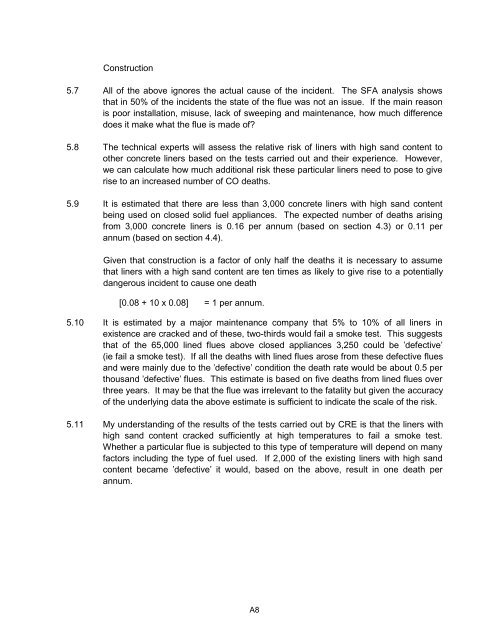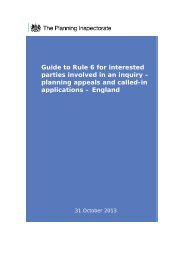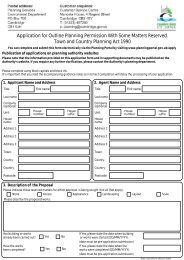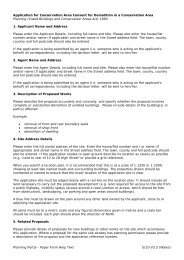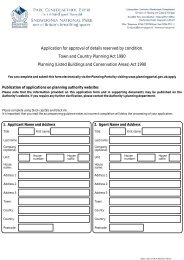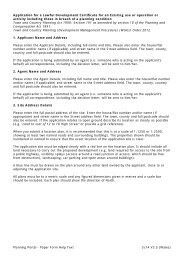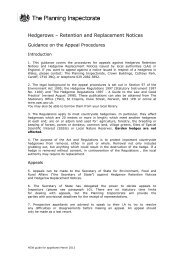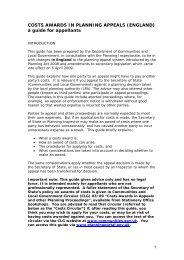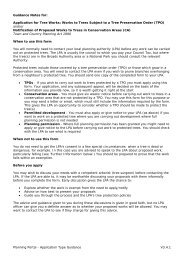Appendix A: Report on risk assessment of chimney ... - Planning Portal
Appendix A: Report on risk assessment of chimney ... - Planning Portal
Appendix A: Report on risk assessment of chimney ... - Planning Portal
Create successful ePaper yourself
Turn your PDF publications into a flip-book with our unique Google optimized e-Paper software.
C<strong>on</strong>structi<strong>on</strong>5.7 All <strong>of</strong> the above ignores the actual cause <strong>of</strong> the incident. The SFA analysis showsthat in 50% <strong>of</strong> the incidents the state <strong>of</strong> the flue was not an issue. If the main reas<strong>on</strong>is poor installati<strong>on</strong>, misuse, lack <strong>of</strong> sweeping and maintenance, how much differencedoes it make what the flue is made <strong>of</strong>?5.8 The technical experts will assess the relative <strong>risk</strong> <strong>of</strong> liners with high sand c<strong>on</strong>tent toother c<strong>on</strong>crete liners based <strong>on</strong> the tests carried out and their experience. However,we can calculate how much additi<strong>on</strong>al <strong>risk</strong> these particular liners need to pose to giverise to an increased number <strong>of</strong> CO deaths.5.9 It is estimated that there are less than 3,000 c<strong>on</strong>crete liners with high sand c<strong>on</strong>tentbeing used <strong>on</strong> closed solid fuel appliances. The expected number <strong>of</strong> deaths arisingfrom 3,000 c<strong>on</strong>crete liners is 0.16 per annum (based <strong>on</strong> secti<strong>on</strong> 4.3) or 0.11 perannum (based <strong>on</strong> secti<strong>on</strong> 4.4).Given that c<strong>on</strong>structi<strong>on</strong> is a factor <strong>of</strong> <strong>on</strong>ly half the deaths it is necessary to assumethat liners with a high sand c<strong>on</strong>tent are ten times as likely to give rise to a potentiallydangerous incident to cause <strong>on</strong>e death[0.08 + 10 x 0.08] = 1 per annum.5.10 It is estimated by a major maintenance company that 5% to 10% <strong>of</strong> all liners inexistence are cracked and <strong>of</strong> these, two-thirds would fail a smoke test. This suggeststhat <strong>of</strong> the 65,000 lined flues above closed appliances 3,250 could be ’defective’(ie fail a smoke test). If all the deaths with lined flues arose from these defective fluesand were mainly due to the ’defective’ c<strong>on</strong>diti<strong>on</strong> the death rate would be about 0.5 perthousand ’defective’ flues. This estimate is based <strong>on</strong> five deaths from lined flues overthree years. It may be that the flue was irrelevant to the fatality but given the accuracy<strong>of</strong> the underlying data the above estimate is sufficient to indicate the scale <strong>of</strong> the <strong>risk</strong>.5.11 My understanding <strong>of</strong> the results <strong>of</strong> the tests carried out by CRE is that the liners withhigh sand c<strong>on</strong>tent cracked sufficiently at high temperatures to fail a smoke test.Whether a particular flue is subjected to this type <strong>of</strong> temperature will depend <strong>on</strong> manyfactors including the type <strong>of</strong> fuel used. If 2,000 <strong>of</strong> the existing liners with high sandc<strong>on</strong>tent became ’defective’ it would, based <strong>on</strong> the above, result in <strong>on</strong>e death perannum.A8


